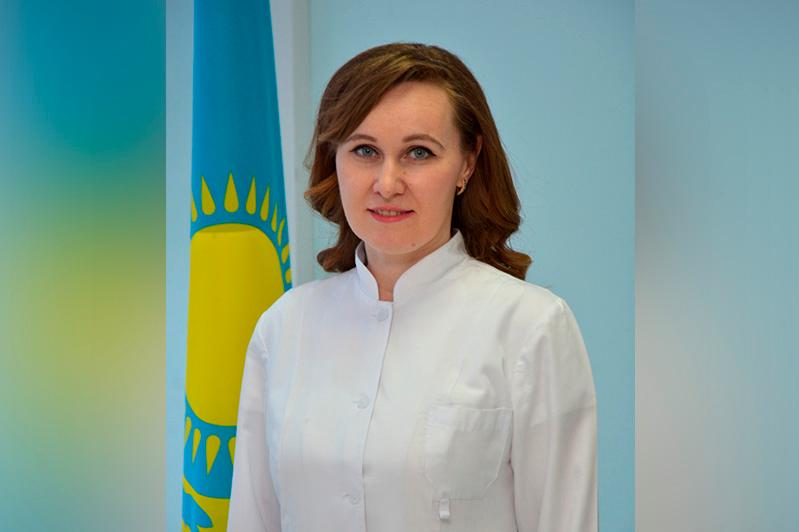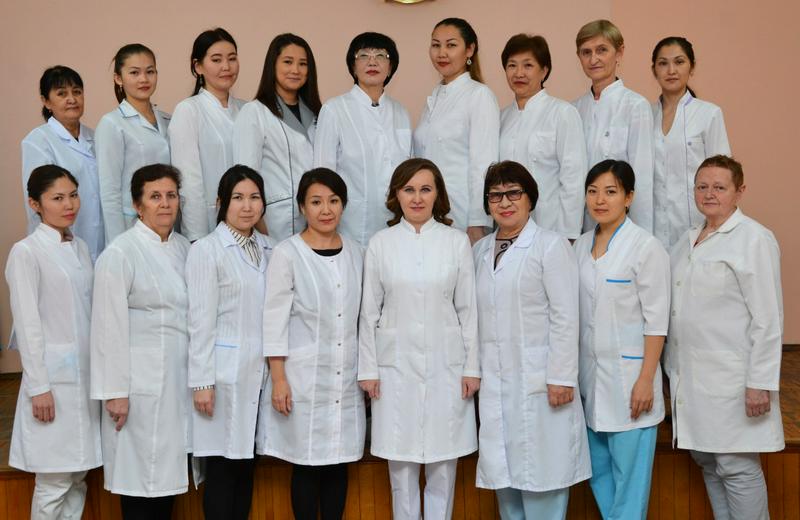Order a callback


Order a call

Order a service
 30.11.2020
30.11.2020
NUR-SULTAN. KAZINFORM November marked exactly one year since a new coronavirus infection, called SARS-CoV-2, began to spread around the world. The first cases in Kazakhstan were registered in March 2020. The head of the virological laboratory of the branch of the National Center for Expertise in the West Kazakhstan region, Olga Bessonova, in an interview with MIA Kazinform correspondent, told how the work was carried out at the beginning of the pandemic, whether there is any sense in closed borders, how the cost of a PCR test is formed and much more.
Olga Anatolyevna, you have been at the forefront since the coronavirus came to Kazakhstan. How did you react? How was the work?
- Our laboratory was the first and only one in the West Kazakhstan region, which carried out the diagnosis of coronavirus infection at the beginning of the pandemic. Already in March, we switched to round-the-clock operation. During the day, up to 1000-1200 samples of material from patients and contact persons were delivered for research. We were required to reliably diagnose COVID-19 as soon as possible, namely no more than 4-6 hours. It was not easy to cope with this task, since there were few specialists who knew the technique of conducting a PCR study. We worked hard, not paying attention to fatigue and the rare opportunity to communicate with family and friends. And we understood that behind every analysis there is a person waiting for the result, and, perhaps, his life depends on it. In order for the results of PCR tests to be delivered to medical institutions on time, we stayed overnight in the laboratory. Night shifts were especially difficult, when samples from air passengers arriving from abroad were delivered for research. Since all passengers after arrival were in the quarantine department of medical organizations awaiting their results. In June, the staff of the laboratory was replenished with new employees, many working rooms were converted into boxes for research. The maximum number of samples was examined in June - more than 13 thousand. I would like to note that in such a difficult period, the teamwork of the entire NCE was felt. Laboratories were promptly provided with test systems for diagnostics, swab probes and various other consumables. In addition, the positive attitude of the team and the confidence that we will cope with a high load, to this day, helps us to overcome difficulties and not stop there. We know that we are not alone, we support each other and have become one big and close-knit family.

- How is the examination of the received materials for coronavirus infection carried out?
- The process is rather complicated. You know that for the diagnosis of COVID-19, a swab from the oropharynx and nasopharynx is used as a material for research. Smears are taken using swab probes and placed in a test tube with a transport medium. Next, diagnostics are carried out using the PCR method (polymerase chain reaction). There is already a narrower direction here, one might say, jewelry work, the explanation of which may be incomprehensible to an ordinary person. Just in general, the bottom line is that the PCR method allows you to identify the causative agent of the disease even in the presence of only a few molecules of its RNA, that is, at very early stages, in the chronic form of the disease, and also in cases where the disease does not manifest itself in any way, proceeding latently. All work to identify the virus is carried out mainly manually in a specialized biological safety cabinet. The specialist must work in personal protective equipment: in a protective suit (overalls), goggles, a respirator, shoe covers and gloves. The work uses PCR equipment: the Rotor-Gene amplifier, which allows you to observe the accumulation of the genetic material of the virus in real time. In the study by PCR, the answer can be obtained within a few hours.
- What cases do you remember during the period of work in strict quarantine and during the easing of quarantine, when the number of infections increased sharply?
- I always remember the very first case of detection of coronavirus infection in the region. The first positive result was registered in a resident of the city of Uralsk, who arrived from the Russian Federation, where positive cases of COVID-19 were already detected at that time. PCR studies were carried out by me and other experienced specialists. The laboratory was confident in the reliability of a positive result for COVID-19. Reporting to management about the result was very exciting. We were worried about the health of the sick person, about the possible infected persons in contact with him, and about the consequences of the spread of the infection already in our city.
- I want to ask some frequently asked questions. If the PCR test showed a negative result, what gives grounds to diagnose a patient with a coronavirus infection?
- The result of a PCR test, despite the presence of symptoms of COVID-19, may be negative. That is, when the virus descends into the lower respiratory tract, the localization of the process changes, with such a course of the disease, a PCR test of a smear taken from the mucous membranes of the upper respiratory tract - the oropharynx and nasopharynx, can give a negative result. In such cases, to determine the exact diagnosis, it is recommended to undergo computed tomography of the lungs.
- I would also like to know if it makes sense to take a PCR test 72 hours before arriving in a particular country, because infection can occur during this time? Or is it only about reducing the likelihood of infection?
Yes, I think it makes sense. This helps us, firstly, to identify asymptomatic carriers of the virus and, secondly, to reduce the risk of infection of other passengers on board the aircraft.
- In general, what decision do you think is the right one: complete isolation or open borders requiring PCR test results from passengers? Or can you suggest your own solution?
- It all depends on the stage of the pandemic, on how we comply with the restrictive measures. If everyone follows the prescribed sanitary measures, I think we can keep the borders open, but only require PCR tests. If symptoms are detected with a negative result, it is necessary to isolate the passenger and conduct an additional PCR test.
- There is an opinion that the cost of a PCR test is overpriced all over the world. Abroad, this procedure is even more expensive than in Kazakhstan. Perhaps there is a commercial reason behind it. Can you name the cost of a PCR test?
- The cost of a PCR test for coronavirus in the laboratories of the National Center for Expertise for individuals is 8,025 tenge. Anyone can take this test. But I want to note that when forming the cost, not only the test itself is taken into account, but also the consumables necessary for this service. That is, this is the name of laboratory products: tips, umbrellas for collecting material, test tubes with a transport medium, including protective equipment for medical personnel, wages, depreciation and overhead costs. - Another of the exciting questions is why the antibodies produced after the coronavirus do not last long? Does this speak of the artificial origin of the virus? - No, this does not mean the artificial origin of the virus. Just the stability of the amount of antibodies depends on the individual characteristics of a person and his immunity. Not always in the human body there is an immune response. In a word, depending on the immunity of a person, antibodies can be produced in the body from several days to several months. It should also be noted that post-infection immunity provides not only antibodies, but also immune cells, such as T-lymphocytes, B-lymphocytes, the so-called cellular link of immunity.
- WHO says that in the future, despite the emergence of a vaccine, we will have to learn how to get along with the coronavirus. What is your opinion? Could the coronavirus disappear like the Spanish flu?
I don't think the virus will go away. We'll have to get along with him. Yes, and it is definitely impossible to talk about his disappearance, since it is necessary to conduct scientific research. It is necessary to study the possible mutation of the virus and spread in the environment. It is also necessary to vaccinate the population and, first of all, those at risk. Yes, the coronavirus infection has a mortality rate. Scientists have calculated that the coronavirus, on average, kills about five to ten people out of a thousand infected. But the infection rate is also very low, if you follow the simple rules that probably every second person in the world already knows: wear masks, maintain social distance, constantly wash and sanitize your hands. In addition, these rules protect us from other diseases, such as SARS, influenza. Take care of yourself and loved ones! - Thank you very much for the interview!
Reference: Olga Bessonova's total work experience is 21 years, as a doctor of a virological laboratory - 18 years. In 1998 she graduated from the Aktobe State Medical Academy. She began her career as a neuropathologist in a specialized orphanage in the city of Uralsk. Having studied the prospects for the development of a laboratory service for the diagnosis of viral infections, she went to work in a virological laboratory. At that time, it was the only laboratory in the West Kazakhstan region that was engaged in the diagnosis of viral infections and the study of the spread of viruses in the environment.
Source: inform.kz https://www.inform.kz/ru/rabotali-v-usilennom-rezhime-ne-obraschaya-vnimaniya-na-ustalost-virusolog_a3724464